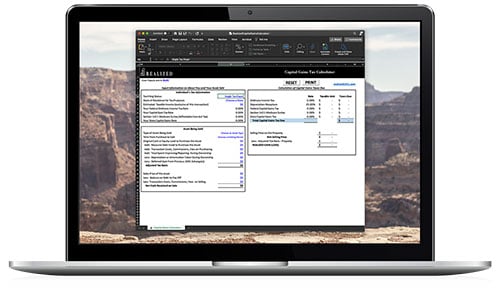
Anytime your business’s losses and allowable deductions exceed its income for a given tax year, you’ll be left with a net operating loss (NOL).
Net operating losses (NOLs) occupy a unique space in your company’s revenue because NOLs can be carried forward and applied to a future year’s tax bill. There are limits to how much of your net operating loss can be carried forward, however. Let's look at NOLs, as well as capital gains, to understand why NOLs cannot be used to offset capital gains.
What are Net Operating Losses?
When your business losses and allowable tax deductions exceed all your combined income for the year, you’ll have a net operating loss. NOLs also arise from casualty losses. Additionally, if a single taxpayer operates more than one business, he or she can only record a net operating loss if losses from all businesses owned and operated by the same taxpayer exceed the total income from the taxpayer's combined business operations.
Net operating loss can be carried forward and applied to income earned in another tax year to lower that year’s tax liability, which can help spread out your tax burden. NOLs can be carried forward indefinitely, too – there’s no limit on how long you can carry forward a net operating loss, so you can continue applying a NOL to subsequent tax years until the amount is exhausted.
However, the carryforward for NOLs is limited to 80 percent of your taxable income in the year the carryforward is applied. Although significant changes were made to NOLs with the Tax Cuts and Jobs Act of 2017, some restrictions were rolled back with the Coronavirus Aid, Relief and Economic Security Act of 2022. Taxpayers now can carryback NOLs for tax years 2018-2020, although any net operating losses recorded after 2021 must be applied to future tax years and cannot be carried back at all.
What Are Capital Gains?
Real estate investors who’ve bought and sold investment properties are familiar with capital gains and capital losses. To recap, you’ll record a capital gain if your investment property is sold for more than your original basis. You'll also record a capital loss if you divest the asset for less than what you paid for it.
Capital gains are divided into two categories: Long- and short-term gains. Short-term capital gains occur when you profit from an investment held for less than one year. Long-term capital gains, meanwhile, occur when profit from an investment is held for 12 months or longer. The distinction is important because tax treatment is different for long- and short-term capital gains.
Short-term capital gains are taxed as ordinary income, which can be as high as 37 percent for the highest-earning taxpayers. Long-term capital gains are taxed at more favorable rates, though. Long-term capital gains taxes are either 0, 15, or 20 percent, depending on your income and filing status. If your income is within these thresholds, you’ll fall into the 15 percent tax bracket for long-term capital gains:
- Less than or equal to $445,850 for single filers
- Less than or equal to $501,600 for married filers
- Less than or equal to $473,750 for head of household
- Less than or equal to $250,800 married filing separately
Why NOLs Can’t Be Used to Offset Capital Gains
Net operating losses cannot be used to offset capital gains because the Internal Revenue Service views these two categories as two different types of income.
As noted, any NOL recorded after 2021 can only be carried forward and will offset up to 80 percent of your ordinary income in future tax years. Capital gains, though, can only be offset by capital losses. Furthermore, long-term capital losses can only be applied to long-term capital gains. Likewise, short-term capital losses can only be offset by short-term capital gains. Capital losses are limited to $3,000 annually, but you can carry capital losses forward indefinitely until the amount is exhausted.
Putting it all Together
Net operating losses recorded after 2021 can be carried forward indefinitely to offset up to 80 percent of gross income in future tax years. Net operating losses derive from a different income stream than capital gains or capital losses, though, so they cannot be used to offset capital gains realized in future tax years.
This material is for general information and educational purposes only. Information is based on data gathered from what we believe are reliable sources. It is not guaranteed as to accuracy, does not purport to be complete and is not intended to be used as a primary basis for investment decisions. It should also not be construed as advice meeting the particular investment needs of any investor.
Realized does not provide tax or legal advice. This material is not a substitute for seeking the advice of a qualified professional for your individual situation.


